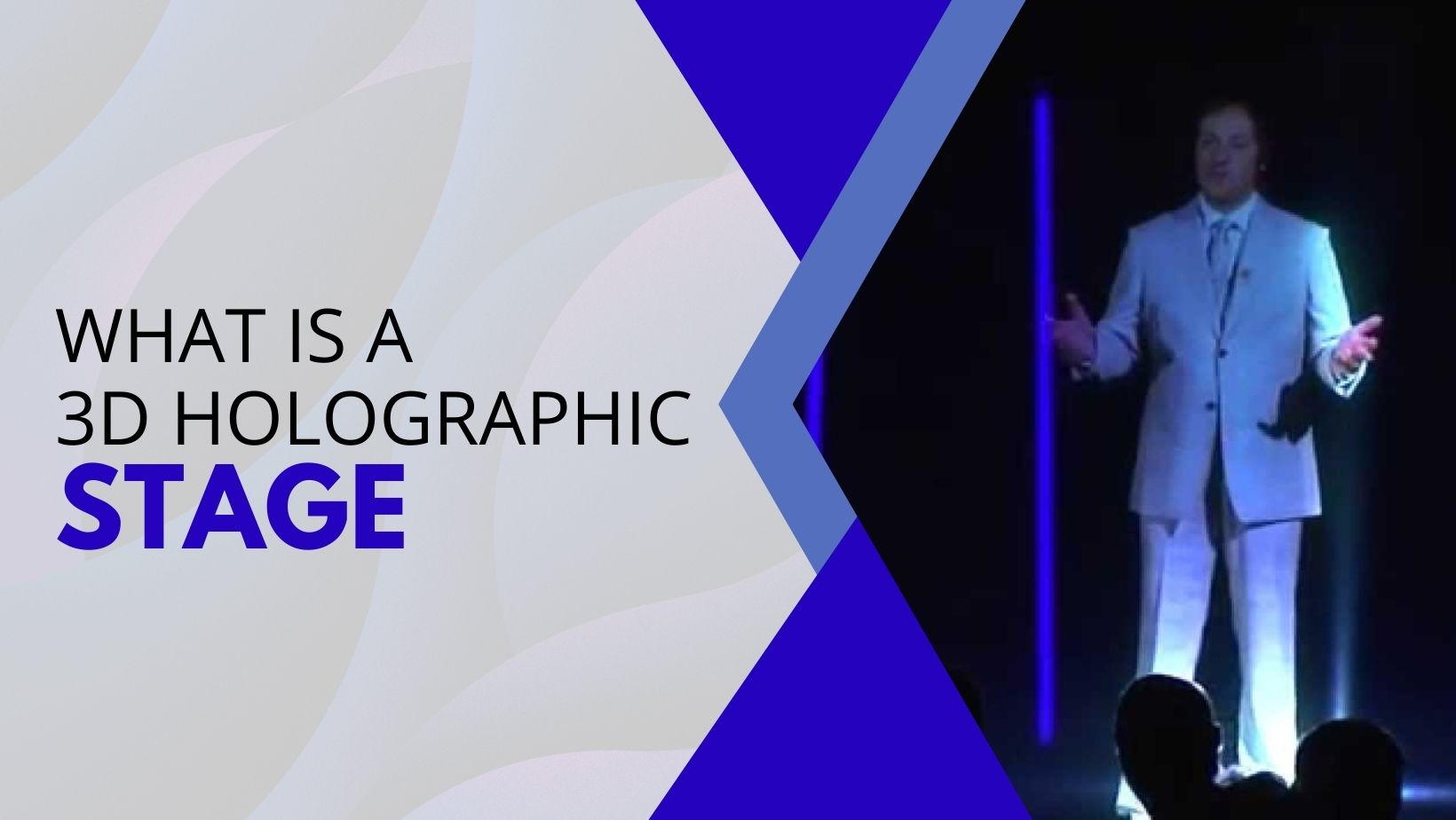Assume observing life-sized dinosaurs walking the stage, historical images providing products or speeches looking sailing in the air. No, it’s not science imagination, but the attractive world of 3D holographic stages. These inventive structures are converting the pattern we sense in entertainment, shows and even education. Compare and choose the perfect holographic displays with one of the premier holographic display providers i.e., Vision3D. But how does this technique consistently perform? In this article, we will uncover the secrets of a 3D holographic stage.
Dispelling the Myth – True Holograms vs 3D Illusions
First of all, It’s significant to clear a usual misreading. While the term “holographic” is often utilized, these platforms don’t develop real holograms – stiffened 3D objects manufactured of light. In place of it, they depend on complex projection strategies to generate the illusion of depth and 3D imagery. This difference might look precise but it shows the significant role of intelligent visual improvement in developing the amazing impact.
What are the Building Blocks of These Mesmerizing Illusions of A Holographic Stage?
A few significant features of a professional hologram projector are given below.
- Projectors – Strong-powered projectors beam especially developed content onto a special region on the platform. Such projectors often use modern techniques such as ultra-paced refresh prices and laser-powered light sources to assure disturbance-free and seamless visuals.
- Screens – But where does the picture appear? In contrast to famous trusts, there is not a physically robust “holographic screen”. Instead, a crystal and clear projection is often built of a special gauze or film is technically placed. This screen looks invisible to the viewers enabling the picture to sail in the air.
- Content Creation – The magic stays in the content itself. 3D animation software magically structures layered visuals with special depth prompting and perspective deformations. These strategies hit the mind into assuming a wide picture with volume and depth developing the 3D objects illusion establishing in space.
Additional Elements – Sound play and lightning play significant roles in improving the implementation. Technically positioned lights to illuminate the projection region while carefully developed sound impacts further establish the illusion in the surrounding atmosphere.
Different Technologies, Same Goal – Captivating Audiences
While the basic principle stays similar, multiple strategies can get the 3D holographic stage impact. A few common reaches are given below.
- Pepper’s Ghost Illusion – This classic strategy utilizes angled mirrors and intelligently placed objects to develop an illusion of a ghostly picture moving above the stage.
- Autostereoscopic Displays – These specific screes can project multiple pictures to each eye producing a real 3D insight without needing glasses.
Volumetric Displays – These modern systems in development still use strategies such as particle modification or fog to develop real 3D objects with a specified space.
Beyond the Wow Factor – Applications of 3D Holographic Stages
The opportunities of a professional hologram projector stretch far beyond dashing viewers with visual technique. A few capable applications are given below.
- Education – Assume historical figures developing to provide exclusive molecular structures or lectures revolving around engaging learning.
- Product Launches – Demonstrate new products in an attractive pattern enabling viewers to analyze them from all angles virtually.
- Live Events – Improve performances, concerts and events with engaging visuals that connect viewers on a deeper level.
- Remote Collaboration – Organize presentations or discussions with geographically distributed teams featuring an experience of availability and divided space.
Museums and Exhibitions – Bring inanimate objects to life by offering travellers with a more interactive and collaborative insight.
The Future of 3D Holographic Stages – A Glimpse into Tomorrow
The 3D holographic stage globe is still emerging with consistent developments in technology and content curation patterns. Future opportunities involve.
- Interactive experiences – Viewers might engage with the holograms directly attaching a new layer of interactions.
- Miniaturized stages – Cost-effective and portable setups could drive holographic familiarities to broader viewers and smaller venues.
- True 3D displays – Technical game-changers could open the path for real volumetric displays curating generic 3D objects without depending on visual illusions.
As technique develops, 3D holographic stages commit to redesign our perception of education, communication and even entertainment. By incorporating the illusion magic and pushing the restrictions of visual strategy, these inventive stages are collecting in a new age of engaging familiarities. So, prepare to move into a world where assumption arrives to life, one attractive hologram at a time.
Conclusion
So, the Professional hologram projector modifies education, entertainment and communication through attractive illusions. Though not developing real holograms, these structures amaze viewers with engaging insights and lifelike visuals. With the recent technical developments, the future grips unlimited opportunities committing even more alluring comes across with the holography world. To know more about holographic displays, connect with the Vision3D customer service number – (+91) – 8971953451.
